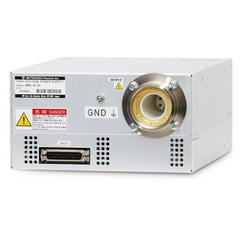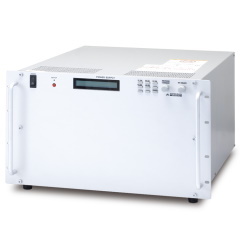A floating power supply is a power supply that can be used with its output floating ground. While ordinary DC power supplies are used with one side of the output end grounded to the ground, floating power supplies can be used with another power output connected to one side of the output end. Floating power supplies can be connected to another power supply output on one side of the output end. A floating power supply's input and output sides alone have a high dielectric strength inside the product.
The main applications of floating power supplies are power supplies for microchannel plates used in detectors of mass spectrometry, power supplies for filaments of anode-grounded X-ray tubes, power supplies for filaments, grids, bias, and electrostatic lenses of scanning electron microscopes (SEM), and transmission electron microscopes (TEM), and power supplies for filaments, suppressor electrodes (suppressors), extractor electrodes (extractors), and condenser lenses of focused ion beam (FIB) devices.
When selecting a floating power supply, it is necessary to confirm that the voltage and current (electrical power) required for the load and the external floating voltage is less than the dielectric strength voltage of the floating power supply.

In this figure, the heating for the filament power supply and the bias power supply for the wehnelt are floating power supplies.
Matsusada Precision offers the FDCS, MDC, and FDC series as highly isolated low-voltage DC power supplies for floating high-voltage power supplies. We also provide the XPg series X-ray tube power supplies, the SEM series scanning electron microscope power supplies, the HEB series electron beam power supplies, and the HIB series ion beam power supplies, which all integrate floating power supplies into a system.











